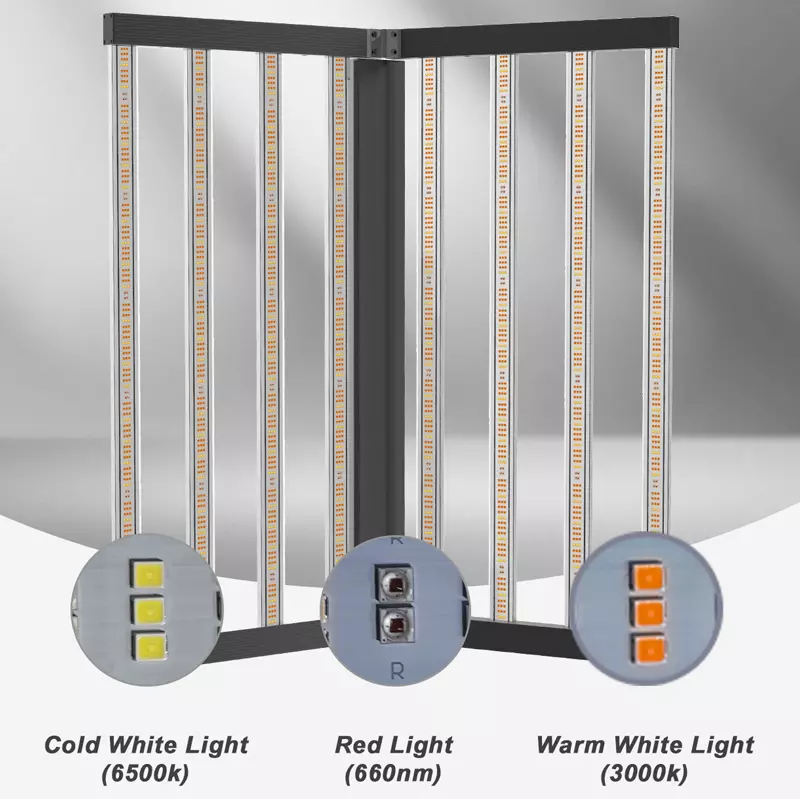In traditional agricultural production, ordinary electric light sources are generally used to supplement light and agricultural technical measures such as the application of different covering materials, such as the use of monochromatic fluorescent lamps or colored plastic films, change the light environment to regulate the growth and development of plants in the facility cultivation environment. However, these measures have different degrees of problems, such as lack of analysis of specific spectral components, resulting in impure light quality processing, inconsistent light intensity, close to or even lower than the light compensation point of plants, and low energy efficiency of illumination light sources. The research results of a large number of applications of LED plant lights in plant facilities cultivation environments show that LED plant lights can solve these problems and are especially suitable for artificial light-controlled plant facilities cultivation environments.
LED grow lights are attracting the world’s attention with their inherent superiority. Especially in the context of rising concerns about global energy shortages, LED plant lights have attracted worldwide attention due to their high luminous efficiency, long service life, safety and reliability, environmental protection and energy saving.

Light environment is one of the important physical environmental factors that are indispensable for plant growth and development. Controlling plant morphogenesis through light quality regulation is an important technology in the field of facility cultivation.
Feature:
The wavelengths are rich in types, which are exactly in line with the spectral range of plant photosynthesis and photomorphogenesis; the half-width of the spectral wave is narrow, and pure monochromatic light and composite spectrum can be obtained by combining as required; the light of a specific wavelength can be concentrated to irradiate crops in a balanced manner; it can not only adjust crops Flowering and fruiting, and can control the plant height and plant nutrients; the system generates less heat and occupies less space, and can be used in a multi-layer cultivation three-dimensional combination system to achieve low heat load and miniaturization of production space.
Application of LED Grow Lights in Plant Cultivation
As the fourth generation of new lighting sources, LED grow lights have many characteristics different from other electric light sources, which also makes them the first choice for energy-saving and environmentally friendly light sources. The LED grow lights used in the field of plant cultivation also show the following characteristics: the wavelength types are rich, which just matches the spectral range of plant photosynthesis and photomorphology; the half-width of the spectral wave is narrow, and pure monochromatic light and composite spectrum can be combined as needed; Concentrate light of a specific wavelength to irradiate crops in a balanced manner; it can not only adjust the flowering and fruiting of crops, but also control plant height and plant nutrients; the system generates less heat and occupies less space, and can be used in a multi-layer cultivation three-dimensional combination system to achieve low heat. Loads and production space are miniaturized; in addition, its exceptional durability reduces operating costs. Due to these remarkable features, LED grow lights are very suitable for plant cultivation in controlled facility environments, such as plant tissue culture, facility gardening and factory seedling raising, and aerospace ecological life protection systems.
